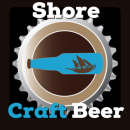With so many styles of beer to chose from, knowing which one is perfect for you can be a confusing, if not daunting, task, especially if your usual beer preference is Bud Light. As Ocean City, Maryland continues to become one of the premier craft beer destinations on the East Coast, it is important that visitors understand what exactly they are drinking. To help make the process easier, here is a look at the differences in the most popular styles of beer, as described by the professionals at beeradvocate.com.
The IPAs
American IPA- The American IPA is a different soul from the reincarnated IPA style. More flavorful than the withering English IPA, color can range from very pale golden to reddish amber. Hops are typically American with a big herbal and / or citric character, bitterness is high as well. Moderate to medium bodied with a balancing malt backbone. Average ABV: 5.5-7.5%
Belgian IPA- Inspired by the American India Pale Ale (IPA) and Double IPA, more and more Belgian brewers are brewing hoppy pale colored ales for the US market (like Chouffe & Urthel), and there’s been an increase of Belgian IPAs being brewed by American brewers. Generally, Belgian IPAs are considered too hoppy by Belgian beer drinkers. Various malts are used, but the beers of the style are finished with Belgian yeast strains (bottle-conditioned) and the hops employed tend to be American. You’ll generally find a cleaner bitterness vs. American styles, and a pronounced dry edge (very Belgian), often akin to an IPA crossed with a Belgian Tripel. Alcohol by volume is on the high side. Many examples are quite cloudy, and feature tight lacing, excellent retention, and fantastic billowy heads that mesmerize (thanks, in part, to the hops). Average ABV: 6-12%
English IPA- First brewed in England and exported for the British troops in India during the late 1700s. To withstand the voyage, IPA’s were basically tweaked Pale Ales that were, in comparison, much more malty, boasted a higher alcohol content and were well-hopped, as hops are a natural preservative. Historians believe that an IPA was then watered down for the troops, while officers and the elite would savor the beer at full strength. The English IPA has a lower alcohol due to taxation over the decades. The leaner the brew the less amount of malt there is and less need for a strong hop presence which would easily put the brew out of balance. Some brewers have tried to recreate the origianl IPA with strengths close to 8-9% abv. Average ABV: 4-6.5%
Double IPA- Take an India Pale Ale and feed it steroids, ergo the term Double IPA. Although open to the same interpretation as its sister styles, you should expect something robust, malty, alcoholic and with a hop profile that might rip your tongue out. The Imperial usage comes from Russian Imperial stout, a style of strong stout originally brewed in England for the Russian Imperial Court of the late 1700s; though Double IPA is often the preferred name. You can thank west coast American brewers for this somewhat reactionary style. Average ABV: 7-14%
American Ales
Pale Ale- Of British origin, this style is now popular worldwide and the use of local ingredients, or imported, produces variances in character from region to region. Generally, expect a good balance of malt and hops. Fruity esters and diacetyl can vary from none to moderate, and bitterness can range from lightly floral to pungent. American versions tend to be cleaner and hoppier, while British tend to be more malty, buttery, aromatic and balanced. Average ABV: 4-7%
Amber/ Red Ale- Primarily a catch all for any beer less than a Dark Ale in color, ranging from amber (duh) to deep red hues. This style of beer tends to focus on the malts, but hop character can range from low to high. Expect a balanced beer, with toasted malt characters and a light fruitiness in most examples. The range can run from a basic ale, to American brewers who brew faux-Oktoberfest style beers that are actually ales instead of lagers. Average ABV: 4-7%
Blonde Ale– More or less a creation from the craft-brewery movement, and also reminiscent of the German style Kölsch. Pale straw to deep gold for color. Usually an all malt brew, well attenuated with a lightly malty palate. Most have a subdued fruitiness. Hop character is of the noble variety, or similar, leaving a light to medium bitterness. A balanced beer, light bodied and sometimes lager like. Average ABV: 4-7%
Brown Ale– Spawned from the English Brown Ale, the American version can simply use American ingredients. Many other versions may have additions of coffee or nuts. This style also encompasses “Dark Ales”. The bitterness and hop flavor has a wide range and the alcohol is not limited to the average either. Average ABV: 4-8%
Black Ale- Also referred to as a Black IPA (India Pale Ale) or Cascadian Dark Ale, ales of this style range from dark brown to pitch black and showcase malty and light to moderate roasty notes and are often quite hoppy generally with the use of American hops. Alcohol can range from average to high depending on if the brewery is going for a “dobule / imperial” version. Average ABV: 5-10%
Barleywine– Despite its name, a Barleywine (or Barley Wine) is very much a beer, albeit a very strong and often intense beer! In fact, it’s one of the strongest of the beer styles. Lively and fruity, sometimes sweet, sometimes bittersweet, but always alcoholic. A brew of this strength and complexity can be a challenge to the palate. Expect anything from an amber to dark brown colored beer, with aromas ranging from intense fruits to intense hops. Body is typically thick, alcohol will definitely be perceived, and flavors can range from dominant fruits to palate smacking, resiny hops. English varieties are quite different from the American efforts, what sets them apart is usually the American versions are insanely hopped to make for a more bitter and hop flavored brew, typically using American high alpha oil hops. English versions tend to be more rounded and balanced between malt and hops, with a slightly lower alcohol content, though this is not always the case. Average ABV: 8-15%
Stouts, Porters, and other popular styles
Pilsner– The birth of Pilsner beer can be traced back to its namesake, the ancient city of Plzen (or Pilsen) which is situated in the western half of the Czech Republic in what was once Czechoslovakia and previously part of the of Bohemian Kingdom. Pilsner beer was first brewed back in the 1840′s when the citizens, brewers and maltsters of Plzen formed a brewer’s guild and called it the People’s Brewery of Pilsen. The Czech Pilsner, or sometimes known as the Bohemian Pilsner, is light straw to golden color and crystal clear. Hops are very prevalent usually with a spicy bitterness and or a spicy floral flavor and aroma, notably one of the defining characteristics of the Saaz hop. Smooth and crisp with a clean malty palate, many are grassy. Some of the originals will show some archaic yeast characteristics similar to very mild buttery or fusel (rose like alcohol) flavors and aromas. Average ABV: 4.5-5.5%
Porter– Inspired from the now wavering English Porter, the American Porter is the ingenuous creation from that. Thankfully with lots of innovation and originality American brewers have taken this style to a new level. Whether it is highly hopping the brew, using smoked malts, or adding coffee or chocolate to complement the burnt flavor associated with this style. Some are even barrel aged in Bourbon or whiskey barrels. The hop bitterness range is quite wide but most are balanced. Many are just easy drinking session porters as well. Average ABV: 4-7.5%
Stout– Inspired from English & Irish Stouts, the American Stout is the ingenuous creation from that. Thankfully with lots of innovation and originality American brewers have taken this style to a new level. Whether it is highly hopping the brew or adding coffee or chocolate to complement the roasted flavors associated with this style. Some are even barrel aged in Bourbon or whiskey barrels. The hop bitterness range is quite wide but most are balanced. Many are just easy drinking session stouts as well. Average ABV: 4-7%
Extra Special/ Strong Bitter (ESB)- ESBs are essentially more aggressive and more balanced Bitters, both in alcohol and hop character, but nothing overpowering. Color range will be similar, though leaning towards the darker end of the scale; dark golds to copper. Low carbonation. Malts tend to be more pronounced, often toasty and fruity, with maybe some notes diacetyl. And despite “bitter” being in its name, ESBs are not really all that bitter. They key to an ESB is balance. Average ABV: 4-7%
Farmhouse Saison- Saisons are sturdy farmhouse ale that was traditionally brewed in the winter, to be consumed throughout the summer months. Not so long ago it was close to being an endangered style, but over recent years there’s been a massive revival; especially in the US. This is a very complex style; many are very fruity in the aroma and flavor. Look for earthy yeast tones, mild to moderate tartness. Lots of spice and with a medium bitterness. They tend to be semi-dry with many only having touch of sweetness. Average ABV: 5-8%
Kölsch- First only brewed in Köln, Germany, now many American brewpubs and a hand full of breweries have created their own version of this obscure style. Light to medium in body with a very pale color, hop bitterness is medium to slightly assertive. A somewhat vinous (grape-y from malts) and dry flavor make up the rest. Average ABV: 4-6%
Hefeweizen- A south German style of wheat beer (weissbier) made with a typical ratio of 50:50, or even higher, wheat. A yeast that produces a unique phenolic flavors of banana and cloves with an often dry and tart edge, some spiciness, bubblegum or notes of apples. Little hop bitterness, and a moderate level of alcohol. The “Hefe” prefix means “with yeast”, hence the beers unfiltered and cloudy appearance. Poured into a traditional Weizen glass, the Hefeweizen can be one sexy looking beer. Often served with a lemon wedge (popularized by Americans), to either cut the wheat or yeast edge, which many either find to be a flavorful snap … or an insult and something that damages the beer’s taste and head retention. Average ABV: 4-7%
Märzen / Oktoberfest- Before refrigeration, it was nearly impossible to brew beer in the summer due to the hot weather and bacterial infections. Brewing ended with the coming of spring, and began again in the fall. Most were brewed in March (Märzen). These brews were kept in cold storage over the spring and summer months, or brewed at a higher gravity, so they’d keep. Märzenbier is full-bodied, rich, toasty, typically dark copper in color with a medium to high alcohol content. The common Munich Oktoberfest beer served at Wies’n (the location at which Munich celebrates its Oktoberfest) contains roughly 5.0-6.0% alcohol by volume, is dark/copper in color, has a mild hop profile and is typically labeled as a Bavarian Märzenbier in style. Average ABV: 4-7%
Source: beeradvocate.com



